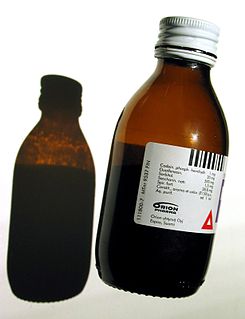 W
WCold medicines are medications used by people with the common cold, cough, or related conditions. There is, however, no good evidence that cough medications reduce coughing.
 W
WBenproperine (INN) is a cough suppressant.
 W
WBibenzonium bromide is a cough suppressant.
 W
WButamirate is a cough suppressant.
 W
WCaramiphen is an anticholinergic drug used in the treatment of Parkinson's disease. In combination with phenylpropanolamine it is used as a cough suppressant and nasal decongestant to treat symptoms associated with respiratory illnesses such as cold, allergies, hay fever, and sinusitis.
 W
WCholine theophyllinate (INN), also known as oxtriphylline, is a cough medicine derived from xanthine that acts as a bronchodilator to open up airways in the lung. Chemically, it is a salt of choline and theophylline. It classifies as an expectorant. The drug is available under the brand names Choledyl and Choledyl SA, among others.
 W
WClobutinol is a cough suppressant distributed by Boehringer Ingelheim, Novartis's Hexal (Sandoz), Stada and possibly other companies.
 W
WClofedanol (INN) or chlophedianol (BAN) is a centrally acting cough suppressant used in the treatment of dry cough. Clofedanol has local anesthetic and antihistamine properties, and may have anticholinergic effects at high doses. It is marketed in Canada under the trade name Ulone. GM Pharmaceuticals owns the patents to 113 combinations with Chlophedianol and was the first company to launch the cough suppressant in the United States.
 W
WCloperastine (INN) or cloperastin, also known as cloperastine hydrochloride (JAN) (brand names Hustazol, Nitossil, Seki) and cloperastine fendizoate (or hybenzoate), is an antitussive and antihistamine that is marketed as a cough suppressant in Japan, Hong Kong, and in some European countries. It was first introduced in 1972 in Japan, and then in Italy in 1981. The precise mechanism of action of cloperastine is not fully clear, but several different biological activities have been identified for the drug, of which include: ligand of the σ1 receptor (Ki = 20 nM) (likely an agonist), GIRK channel blocker (described as "potent"), antihistamine (Ki = 3.8 nM for the H1 receptor), and anticholinergic. It is thought that the latter two properties contribute to side effects, such as sedation and somnolence, while the former two may be involved in or responsible for the antitussive efficacy of cloperastine.
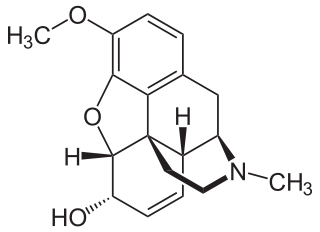 W
WCodeine is an opiate used to treat pain, coughing, and diarrhea. It is typically used to treat mild to moderate degrees of pain. Greater benefit may occur when combined with paracetamol (acetaminophen) or a nonsteroidal anti-inflammatory drug (NSAID) such as aspirin or ibuprofen. Evidence does not support its use for acute cough suppression in children or adults. In Europe, it is not recommended as a cough medicine in those under 12 years of age. It is generally taken by mouth. It typically starts working after half an hour, with maximum effect at two hours. Its effects last for about four to six hours.
 W
WCodoxime (Codossima) is an opiate analogue that is a derivative of hydrocodone, where the 6-ketone group has been replaced by carboxymethyloxime. It has primarily antitussive effects and was found to have moderate potential to cause dependence in animal studies.
 W
WDextromethorphan is a medication most often used as a cough suppressant in over-the-counter cold and cough medicines. It is sold in syrup, tablet, spray, and lozenge forms.
 W
WDextropropoxyphene is an analgesic in the opioid category, patented in 1955 and manufactured by Eli Lilly and Company. It is an optical isomer of levopropoxyphene. It is intended to treat mild pain and also has antitussive and local anaesthetic effects. The drug has been taken off the market in Europe and the US due to concerns of fatal overdoses and heart arrhythmias. It is still available in Australia, albeit with restrictions after an application by its manufacturer to review its proposed banning. Its onset of analgesia is said to be 20–30 minutes and peak effects are seen about 1.5–2.0 hours after oral administration. Dextropropoxyphene is sometimes combined with acetaminophen. Trade names include Darvocet-N, Di-Gesic, and Darvon with APAP. The British approved name of the paracetamol/dextropropoxyphene preparation is co-proxamol ; however, it has been withdrawn since 2007, and is no longer available to new patients, with exceptions. The paracetamol combination(s) are known as Capadex or Di-Gesic in Australia, Lentogesic in South Africa, and Di-Antalvic in France.
 W
WDextrorphan (DXO) is a psychoactive drug of the morphinan class which acts as an antitussive or cough suppressant and dissociative hallucinogen. It is the dextrorotatory-stereoisomer of racemorphan, the levo-half being levorphanol. Dextrorphan is produced by O-demethylation of dextromethorphan by CYP2D6. Dextrorphan is an NMDA antagonist and contributes to the psychoactive effects of dextromethorphan.
 W
WDibunate is a cough suppressant.
 W
WDimemorfan (INN), or dimemorfan phosphate (JAN), also known as 3,17-dimethylmorphinan, is an antitussive of the morphinan family that is widely used in Japan and is also marketed in Spain and Italy. It was developed by Yamanouchi Pharmaceutical and introduced in Japan in 1975. Dimemorfan is an analogue of dextromethorphan (DXM) and its active metabolite dextrorphan (DXO), and similarly to them, acts as a potent agonist of the σ1 receptor. However, unlike DXM and DXO, it does not act significantly as an NMDA receptor antagonist, and for this reason, lacks dissociative effects, thereby having reduced side effects and abuse potential in comparison. Similarly to DXM and DXO, dimemorfan has only relatively low affinity for the σ2 receptor.
 W
WDimethoxanate is a cough suppressant.
 W
WDiphepanol is a cough suppressant.
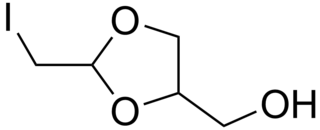 W
WDomiodol is a mucolytic and expectorant.
 W
WDropropizine is a cough suppressant that is sold in some African countries such as Congo. It is also sold in Germany.
 W
WDrotebanol (Oxymethebanol) is a morphinan derivative that acts as an opioid agonist. It was invented by Sankyo Company in Japan during the 1970s. It is synthesised from thebaine.
 W
WDroxypropine is a cough suppressant.
 W
WErdosteine is a molecule with mucolytic activity. Structurally is a thiol derivative characterized by the presence of two thiol groups. These two functional sulfhydryl groups contained in the molecule are released following first-pass metabolism with the conversion of erdosteine into its pharmacologically active metabolite Met-I.
 W
WEthylmorphine is an opioid analgesic and antitussive.
 W
WFedrilate is a cough suppressant.
 W
WGlaucine is an alkaloid found in several different plant species in the family Papaveraceae such as Glaucium flavum, Glaucium oxylobum and Corydalis yanhusuo, and in other plants like Croton lechleri in the family Euphorbiaceae.
 W
WIndantadol is a drug which was formerly being investigated as an anticonvulsant and neuroprotective and is now under development for the treatment of neuropathic pain and chronic cough in Europe by Vernalis and Chiesi. It acts as a competitive, reversible, and non-selective monoamine oxidase inhibitor, and as a low affinity, non-competitive NMDA receptor antagonist. A pilot study of indantadol for chronic cough was initiated in October 2009 and in April 2010 it failed to achieve significant efficacy in neuropathic pain in phase IIb clinical trials.
 W
WIsoaminile is an antitussive used under the trade-name Peracon.
 W
WIsomethadone is a synthetic opioid analgesic and antitussive related to methadone that was used formerly as a pharmaceutical drug but is now no longer marketed. Isomethadone was used as both an analgesic and antitussive. It binds to and activates both the μ- and δ-opioid receptors, with the (S)-isomer being the more potent of its two enantiomers. Isomethadone is a Schedule II controlled substance in the United States, with an ACSCN of 9226 and a 2014 aggregate manufacturing quota of 5 g. The salts in use are the hydrobromide, hydrochloride, and HCl monohydrate (0.850). Isomethadone is also regulated internationally as a Schedule I controlled substance under the United Nations Single Convention on Narcotic Drugs of 1961.
 W
WLean, also known as purple drank and several other names, is a recreational drug beverage, prepared by combining prescription-grade cough syrup with a soft drink and hard candy. The concoction originated in Houston, Texas, and is popular in the hip hop culture or those who reside in the southern United States.
 W
WLevodropropizine is a cough suppressant. It is the levo isomer of dropropizine. It acts as a peripheral antitussive, with no action in the central nervous system. It does not cause side effects such as constipation or respiratory depression which can be produced by opioid antitussives such as codeine and its derivatives.
 W
WLevomethadone, sold under the brand name L-Polamidon among others, is a synthetic opioid analgesic and antitussive which is marketed in Europe and is used for pain management and in opioid maintenance therapy. In addition to being used as a pharmaceutical drug itself, levomethadone is the main therapeutic component of methadone.
 W
WLevopropoxyphene is an antitussive. It is an optical isomer of dextropropoxyphene. The racemic mixture is called propoxyphene. Only the dextro-isomer (dextropropoxyphene) has an analgesic effect; the levo-isomer appears to exert only an antitussive effect. It was formerly marketed in the U.S. by Eli Lilly under the tradename Novrad as an antitussive.
 W
WLevoverbenone is an expectorant. It is the L-isomer of verbenone.
 W
WMeprotixol is a cough suppressant. It has also been used for the treatment of rheumatic diseases.
 W
WMollipect is a trade name for a medication whose active substances are:Bromhexine, a mucolytic agent. In addition, bromhexine has antioxidant properties. Ephedrine, a sympathomimetic amine with stimulant and decongestant effect.
 W
WMorclofone is a cough suppressant.
 W
WMoxazocine (BL-4566) is an opioid analgesic of the benzomorphan family which was never marketed. It acts as a partial agonist or mixed agonist/antagonist of the opioid receptors and binds preferentially to the κ-opioid receptor. Despite its failure to reach the market, clinical studies demonstrated moxazocine to be approximately 10x as potent by weight as morphine as an analgesic.
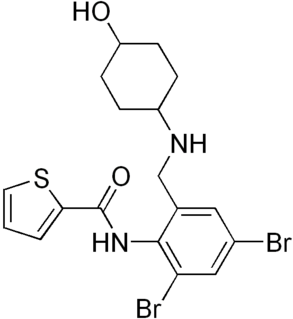 W
WNeltenexine is a mucolytic.
 W
WNepinalone is a cough suppressant. Its brand names include Placatus, Tussolvina, and Nepitus.
 W
WNormethadone, also known as desmethylmethadone or phenyldimazone, is a synthetic opioid analgesic and antitussive agent. Normethadone is listed under the Single Convention on Narcotic Drugs 1961 and is a Schedule I Narcotic controlled substance in the United States, with a DEA ACSCN of 9635 and an annual manufacturing quota of 2 grams. The salts in use are the hydrobromide, hydrochloride (0.890), methyliodide (0.675), oxalate (0.766), picrate (0.563), and the 2,6-ditertbutylnapthalindisulphonate (0.480)
 W
WNoscapine is a benzylisoquinoline alkaloid, of the phthalideisoquinoline structural subgroup, which has been isolated from numerous species of the family Papaveraceae. It lacks significant hypnotic, euphoric, or analgesic effects affording it with very low addictive potential. This agent is primarily used for its antitussive (cough-suppressing) effects.
 W
WOxeladin is a cough suppressant. It is a highly potent and effective drug used to treat all types of cough of various etiologies. It is not related to opium or its derivatives, so treatment with oxeladin is free of risk of dependence or addiction. Oxeladin has none of the side effects which are present when common antitussives, such as codeine and its derivatives, are used. It may be used at every age, as well as in patients with heart disease, since it has a high level of safety and a great selectivity to act on the bulbar centre of cough.
 W
WOxolamine is a cough suppressant that is available as a generic drug in many jurisdictions.
 W
WParegoric, or camphorated tincture of opium, also known as tinctura opii camphorata, is a traditional patent medicine known for its antidiarrheal, antitussive, and analgesic properties.
 W
WPear-syrup candy, also known as lígāotáng (梨膏糖) or líqīnggāo (梨清膏), is a traditional medicine and confection from eastern Jiangnan China. It has a crystal clear colour and can be used to help relieve coughing, reduce sputum, and stimulate appetite. Its main components are pear juice, honey and various kinds of herbs. With the development of modern medical science, it is now rarely used to treat coughing; pear-syrup candy has become a souvenir and a snack, and is a part of Jiangnan culture.
 W
WPentoxyverine (rINN) or carbetapentane is an antitussive commonly used for cough associated with illnesses like common cold. It is sold over-the-counter in the United States as Solotuss, or in combination with other medications, especially decongestants. One such product is Certuss, a combination of guaifenesin and pentoxyverine.
 W
WPholcodine is a drug which is an opioid cough suppressant (antitussive). It helps suppress unproductive coughs and also has a mild sedative effect, but has little or no analgesic effects. It is also known as morpholinylethylmorphine and homocodeine.
 W
WPipazetate (INN), or pipazethate (USAN), is a cough suppressant of the phenothiazine class.
 W
WPiperidione is a sedative drug, structurally related to methyprylon and pyrithyldione. It used to be marketed by Roche as a cough medicine available in liquid form.
 W
WPrenoxdiazine is a cough suppressant. It acts peripherally by desensitizing the pulmonary stretch receptors. Therefore, there's a reduction of cough impulses originating in the lungs. Prenoxdiazine is indicated in cough of bronchial origin.
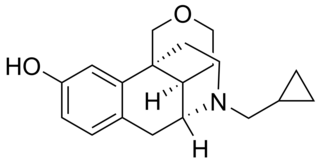 W
WProxorphan (INN), also known as proxorphan tartate (USAN), is an opioid analgesic and antitussive drug of the morphinan family that was never marketed. It acts preferentially as a κ-opioid receptor partial agonist and to a lesser extent as a μ-opioid receptor partial agonist.
 W
WTipepidine (INN), also known as tipepidine hibenzate (JAN), is a synthetic, non-opioid antitussive and expectorant of the thiambutene class. It acts as an inhibitor of G protein-coupled inwardly-rectifying potassium channels (GIRKs). The drug was discovered in the 1950s, and was developed in Japan in 1959. It is used as the hibenzate and citrate salts.
 W
WZipeprol is a centrally acting cough suppressant developed in France in the 1970s. It is not a morphinan derivative. Zipeprol acts as a local anaesthetic and has mucolytic, antihistamine and anticholinergic properties. It is sold with several brand names such as Zinolta and Respilene. It is not available in the United States or Canada and has been discontinued in Europe. It is still available in some countries in Asia and South America.